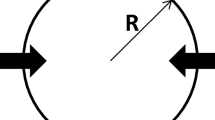Abstract
A mathematical model was established to describe the direct reduction of pellets in a rotary hearth furnace (RHF). In the model, heat transfer, mass transfer, and gas-solid chemical reactions were taken into account. The behaviors of iron metallization and dezincification were analyzed by the numerical method, which was validated by experimental data of the direct reduction of pellets in a Si-Mo furnace. The simulation results show that if the production targets of iron metallization and dezincification are up to 80% and 90%, respectively, the furnace temperature for high-temperature sections must be set higher than 1300°C. Moreover, an undersupply of secondary air by 20% will lead to a decline in iron metallization rate of discharged pellets by 10% and a decrease in dezincing rate by 13%. In addition, if the residence time of pellets in the furnace is over 20 min, its further extension will hardly lead to an obvious increase in production indexes under the same furnace temperature curve.
Similar content being viewed by others
References
L. Shi, R.H. Chen, and R.Y. Wang, Study of present utilization state and development trend of iron-containing sludge and dust in iron and steel industry, China Res. Compreh. Util., 26(2008), No. 2, p. 12.
S. Jiang, Damages of detrimental elements to blast furnaces of PZH steel, Iron Steel, 44(2009), No. 4, p. 96.
E. Tang, Q. Zhou, C. Qin, and J.B. Ruan, Direct reduction technology in rotary hearth furnace for ferrous material treatment, Ironmaking, 27(2008), No. 6, p. 57.
H.W. Xiong and Y.D. Dai, Significance for resource comprehensive utilization of rotary hearth furnace direct reduction in steel industry and analysis of its developing prospects, Energ. China, 34(2012), No. 2, p. 5.
H. Oda, T. Ibaraki, and M. Takahashi, Dust recycling technology by the rotary hearth furnace, Nippon Steel. Tech. Rep., 86(2002), p. 30.
J.Y. Shi, E. Donskoi, and D.L.S. McElwain, Modelling the reduction of an iron ore-coal composite pellet with conduction and convection in an axisymmetric temperature field, Math. Comput. Modell., 42(2005), No. 1–2, p. 45.
S. Halder and R.J. Fruehan, Reduction of iron-oxidecarbon composites: Part I. Estimation of the rate constants, Metall. Mater. Trans. B, 39(2008), No. 6, p. 784.
S. Halder and R.J. Fruehan, Reduction of iron-oxidecarbon composites: Part II. Rates of reduction of composite pellets in a rotary hearth furnace simulator, Metall. Mater. Trans. B, 39(2008), No. 6, p. 796.
S. Halder and R.J. Fruehan, Reduction of iron-oxidecarbon composites: Part III. Shrinkage of composite pellets during reduction, Metall. Mater. Trans. B, 39(2008), No. 6, p. 809.
K. Sun and W.K. Lu, Mathematical modeling of the kinetics of carbothermic reduction of iron oxides in ore-coal composite pellets, Metall. Mater. Trans. B, 40(2009), No. 1, p. 91.
S. Sun and W.K. Lu, Building of a mathematical model for the reduction of iron ore in ore/coal composites, ISIJ Int., 39(1999), No. 2, p. 130.
S. Sun and W.K. Lu, Mathematical modelling of reactions in iron ore/coal composites, ISIJ Int., 33(1993), No. 10, p. 1062.
B. H. Huang and W.K. Lu, Kinetics and mechanisms of reactions in iron ore/coal composites, ISIJ Int., 33(1993), No. 10, p. 1055.
R.F. Wei, J.X. Li, J.M. Li, H.M. Long, P. Wang, G. Gao, and G.P. Lin, Reduction kinetics of carbon-containing pellets made of dust and sludge under weak oxidizing atmosphere, Chin. J. Process Eng., 11(2011), No. 3, p. 429.
Q.R. Zhang, Z.Y. Jiang, and Y.L. Wu, A mathematical model for direct reduction process of carbonzinc-containing pellet, Sciencepaper Online, 2010-01-15, http://www.paper.edu.cn.
Y.X. Hua, Introduction to Kinetics of Metallurgy Process, Metallurgical Industry Press, Beijing, 2004, p. 162.
E. Donskoi and D.L.S. McElwain, Estimation and modeling of parameters for direct reduction in iron ore/coal composites: Part I. Physical parameters, Metall. Mater. Trans. B, 34(2003), p. 93.
Author information
Authors and Affiliations
Corresponding author
Rights and permissions
About this article
Cite this article
Wu, Yl., Jiang, Zy., Zhang, Xx. et al. Numerical simulation of the direct reduction of pellets in a rotary hearth furnace for zinc-containing metallurgical dust treatment. Int J Miner Metall Mater 20, 636–644 (2013). https://doi.org/10.1007/s12613-013-0777-5
Received:
Revised:
Accepted:
Published:
Issue Date:
DOI: https://doi.org/10.1007/s12613-013-0777-5




